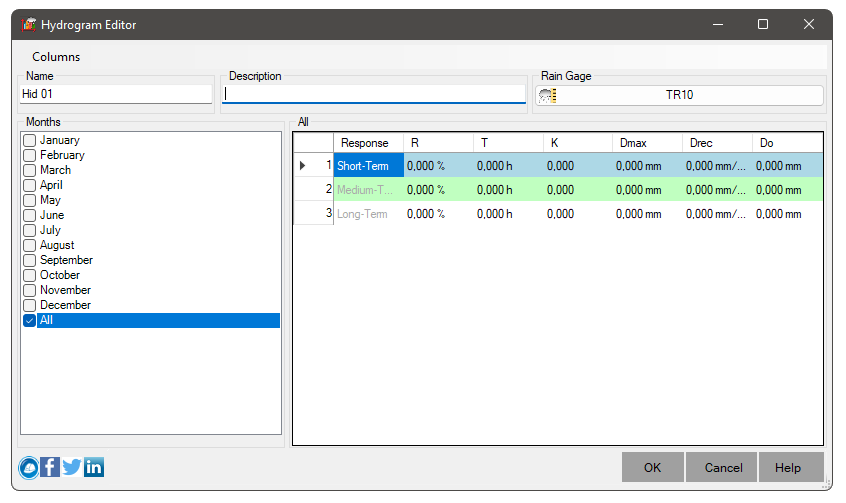Unit hydrographs (UHs) estimate rainfall-dependent inflow/infiltration (RDII) in a sewer system:

A HU set contains three hydrographs:
Each unit hydrograph is defined by three parameters:

It is not necessary for all three hydrographs to be defined, and the sum of the three R values need not equal 1. Note that any unit hydrograph or initial abstraction parameter left blank is assumed to be 0
Different initial abstraction parameters can be assigned to each of the three hydrograph responses:
A HU group can have up to 12 HU sets, one for each month of the year. Each HU group is considered as a separate object by SWMM and is given its own unique name along with the name of the rain gage that provides rainfall data to it.
To generate ISDN at a drainage system node, the node must identify (via its Inflows property) the HU group and the surrounding sewer collector area that contribute to the ISDN flow.
![]() Note: An alternative to using unit hydrographs to define the RDII flow is to create a file
of external ISDN interface, which contains ISDN time series data.
Note: An alternative to using unit hydrographs to define the RDII flow is to create a file
of external ISDN interface, which contains ISDN time series data.
Hydrographs can also be used to replace the main SWMM rain-runoff process that uses subcatchment objects, provided properly calibrated UHs are used. In this case, what SWMM calls the RDII inflow to a node would actually represent surface runoff.
When creating a new hydrogram, provide the following properties: